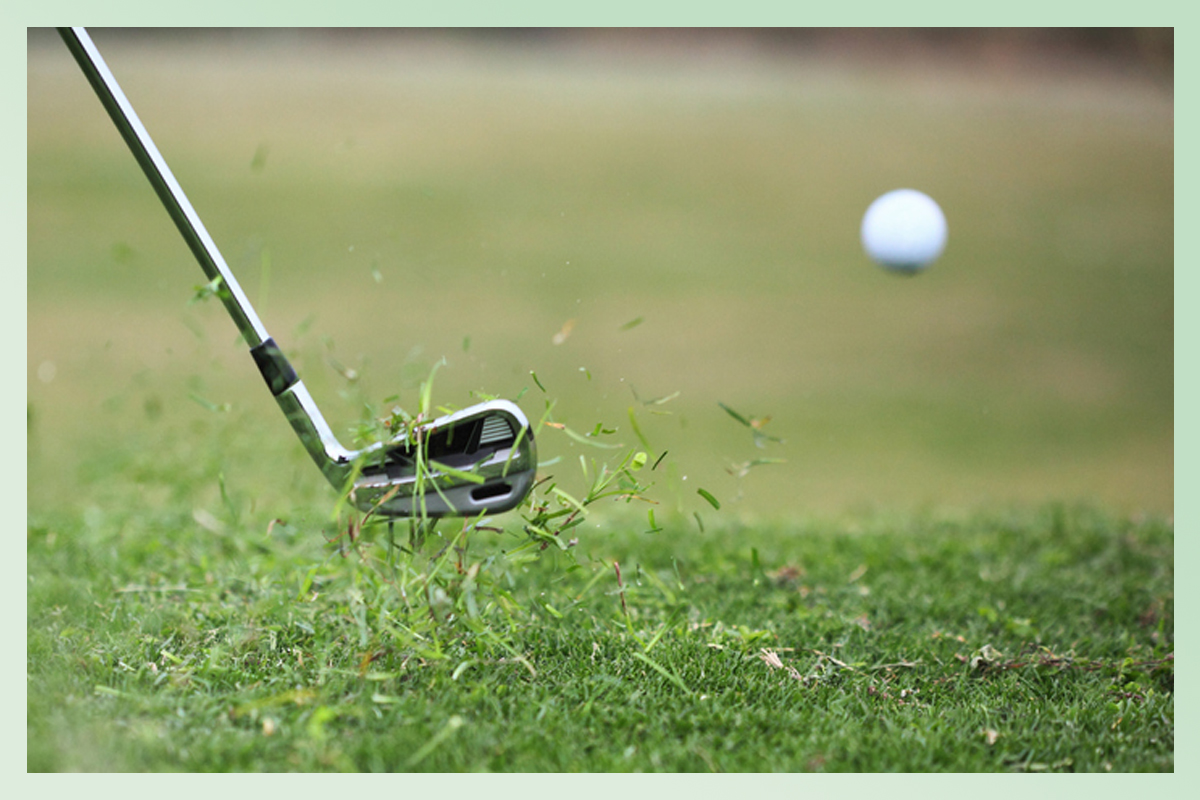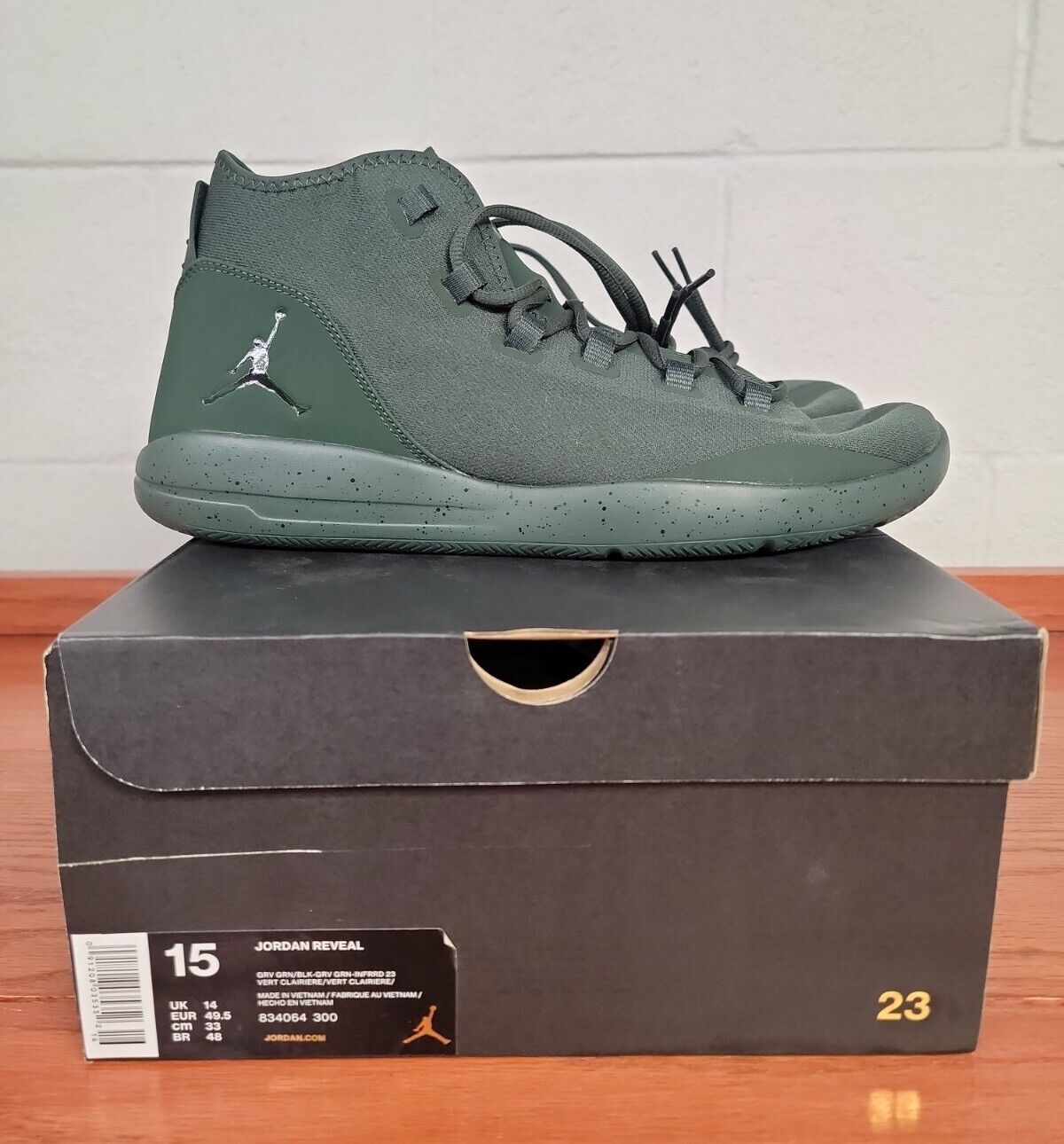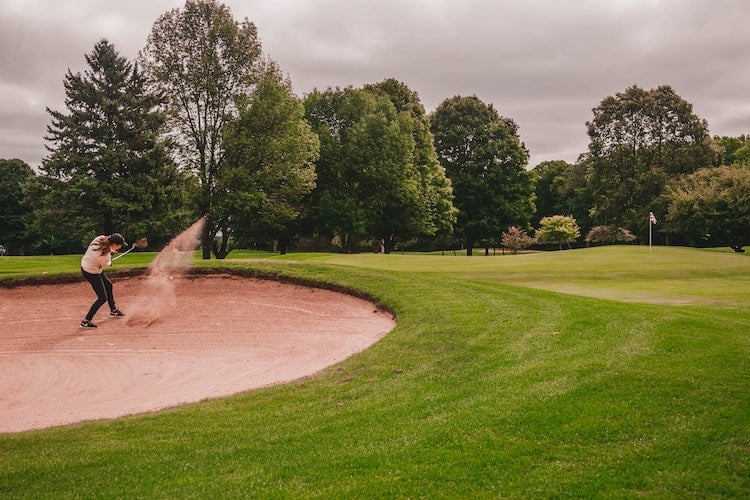Mastering Golf Club Sizing: How to Measure Club Length
To measure the length of a golf club, place the club on a flat surface and measure the distance from the end of the grip to the sole of the clubhead. Golf club length is crucial for a golfer’s swing technique and can impact the accuracy and distance of their shots.
There are standardized measurements for club length set by golf associations, but individual preferences and physical attributes should also be considered when selecting a club. To optimize performance, it’s important for golfers to have clubs that fit their unique swing, height, and arm length.
In addition, some golfers may choose to customize their club length or seek professional fitting to enhance their capabilities on the course.

Credit: www.tonal.com
Understanding The Importance Of Proper Golf Club Sizing
Golfing is a sport that requires a lot of precision and focus. One of the most crucial aspects of the game is having the correct club length for each golfer. Understanding the importance of proper golf club sizing can significantly impact your game and improve your overall performance.
Why Golf Club Sizing Is Important
There are several reasons why golf club sizing is important. Here are some essential points to keep in mind:
- Having the right club length ensures that the golfer’s posture and stance are correct, which directly affects their swing and shot accuracy.
- Ill-fitting clubs can lead to muscle strain and could result in an injury due to the wrong posture.
- When golf clubs are too long or too short, the clubhead speed and ball distance can reduce.
- Indeed, using customized golf clubs ensures that a golfer is playing with equipment that is appropriate for their body type and skill level.
The Benefits Of Properly Sized Golf Clubs
There is no doubt that the primary benefit of using properly sized golf clubs is a higher level of accuracy and consistency. Below are some essential benefits of using correctly sized clubs:
- Playing with clubs that fit correctly enhances the golfers’ posture and alignment, contributing to better ball striking.
- More consistent shots lead to better scores, and ultimately, a more enjoyable game experience.
- Using the proper golf club size also leads to increased distance and ball speed, which can lead to a more aggressive play style.
- Comfort is another significant benefit of using the right size golf clubs. Ill-fitted clubs can tire a golfer, making the game considerably less enjoyable.
Getting the right golf club size and customizing the equipment is crucial to improve swing and shot accuracy, delivering more power on shots, and enhancing comfort while playing. So, it is important to take your time and seek professional guidance while purchasing your golf equipment.
How To Determine Your Ideal Golf Club Length
Golf clubs come in various lengths to suit different golfers, and it’s essential to determine the perfect length for your game. The right length will help improve your swing and give you more accuracy on the course. If you’re wondering how to determine your ideal golf club length, here are some things to consider:
Measuring Your Height
Your height plays a significant role in determining your ideal golf club length. Taller golfers may need longer clubs than shorter golfers for comfort and accuracy. Here’s how to measure your height:
- Stand up straight, barefooted, and place your feet together.
- Get a tape measure and place it at the base of your feet, and stretch it up to your height.
- The length from the floor to the top of your head is your height.
Measuring Your Arm Length
Your arm length also affects the perfect club length for you. The length of your arms determines your wingspan, which should be proportional to the length of your club. To measure your arm length:
- Stand up straight with your arms outstretched to your sides, perpendicular to your body.
- Get someone to help you measure the distance from the tip of one middle finger to the other.
- This measurement is your arm span.
Accounting For Swing Style
Your swing style is a crucial factor in determining the right club length. If you have a faster swing speed, you may need shorter clubs, while slower swing speed may require longer clubs. Additionally, a flatter or more upright swing plane may affect your club length preference.
Using Technology To Determine Ideal Lengths
With the advancement of technology, golfers can leverage club fitting tools and software to determine their ideal club lengths. These tools take into account various parameters such as swing speed, ball speed, launch angle, and spin rate to give a calculation of the perfect club length.
Some of the popular fitting tools include:
- Trackman
- Flightscope
- Foresight
Finding the right golf club length for your game is crucial for enhancing your performance on the course. By considering your height, arm length, and swing style, and leveraging technology, you can determine the ideal club length for you. Don’t underestimate the importance of club fitting and get the perfect clubs to improve your game.
The Different Types Of Golf Clubs And Their Ideal Lengths
Golf is a sport that requires a lot of precision and skill. One of the essential components of playing golf is having the right equipment. One of the most significant aspects of golf equipment is the length of the golf clubs.
A golf club’s length can greatly affect how a player swings and hits the ball. We will discuss the different types of golf clubs and their ideal lengths.
Drivers
Drivers are the longest clubs in a golfer’s bag. They are designed to hit the ball the farthest distance. The ideal length of a driver for most golfers is between 44 to 48 inches. However, it’s crucial to note that the length of a driver can be adjusted depending on a player’s height and swing.
Here are some key points about the length of drivers:
- Longer drivers can generate greater clubhead speed but can also result in less accuracy.
- Shorter drivers provide more control over the ball but may reduce the distance of the shot.
Fairway Woods
Fairway Woods are versatile clubs that can be used for long shots from the fairway or the tee. The ideal length of fairway woods is between 40 to 43 inches. However, the length can be adjusted based on a golfer’s preferences and swing style.
Here are some key points about the length of fairway woods:
- A shorter fairway wood can provide better control over the ball.
- A longer fairway wood can increase the distance of the shot but may also reduce accuracy.
Hybrids
Hybrids are a combination of fairway woods and irons. They are designed to provide a golfer with the best of both worlds: the distance of a fairway wood and the control of an iron. The ideal length of hybrids is between 38 to 42 inches.
Here are some key points about the length of hybrids:
- Longer hybrids can provide more distance but may require more swing speed.
- Shorter hybrids can improve accuracy and provide more control over the ball.
Irons
Irons are used for shots that require more accuracy and precision. Irons range in length from 33 to 40 inches, depending on the number of iron. The higher the number, the shorter the club.
Here are some key points about the length of irons:
- Shorter irons provide the most control over the ball but may not generate as much distance.
- Longer irons generate more distance but may be more difficult to control.
Wedges
Wedges are used for shots that require a high degree of precision, such as pitching and chipping. The ideal length of wedges is between 32 to 36 inches.
Here are some key points about the length of wedges:
- Shorter wedges provide more control over the ball.
- Longer wedges can increase the distance of the shot but may reduce accuracy.
The length of a golf club is an essential factor in a golfer’s game. Players should ensure that they choose the ideal length for each club to optimize their game. With this knowledge, you can select the right golf club length for your style and improve your chances of success on the golf course.
Custom Fitting Options For Golf Clubs
Golf clubs are essential to every golfer’s game, and finding the right one can be overwhelming. One crucial aspect that you must consider when purchasing a golf club is its length. We will be discussing how you can measure the length of a golf club, as well as the benefits of custom fitting options.
The Benefits Of Custom Fitting
Custom fitting can significantly enhance your golfing experience in several ways. Here are some benefits of custom fitting:
- Custom fitting ensures that your golf club is tailored to your body’s specifications, leading to improved accuracy, distance, and comfort.
- Personalized golf clubs also boost your confidence and performance on the course.
- Custom fitting decreases the likelihood of back and wrist injuries, as the golf club’s length is customized for your body type.
The Custom Fitting Process
Custom fitting involves a thorough evaluation of your body specifications and swing characteristics to determine the perfect golf club for you. Below is an overview of the custom fitting process:
- The first step in custom fitting is to locate a certified fitter who will evaluate your golfing style, preferences, and playing goals.
- During the evaluation, the fitter measures your height, arm length, and wrist-to-floor height to determine the right length for your golf club.
- Afterward, the fitter will have you hit balls using several golf clubs of varying lengths and shaft flexes to assess your swing characteristics.
- Based on the evaluation, the fitter will customize a golf club that matches your unique needs and preferences.
Custom Fitting Vs. Off-The-Shelf
Off-the-shelf golf clubs are mass-produced golf clubs that have standard specifications. Here are some differences between custom-fitting and off-the-shelf golf clubs:
- Custom fitting is customized to your body specifications and swing characteristics, while off-the-shelf golf clubs are not.
- Custom fitting leads to more accuracy and distance than off-the-shelf golf clubs because they are tailored to your swing.
- Off-the-shelf golf clubs are available for immediate purchase while custom-fitting golf clubs need to be ordered and may take a bit longer to receive.
Custom fitting is an essential aspect of purchasing a golf club because it improves your performance and helps prevent injuries. It can be challenging to find the right golf club, but with custom fitting options, you can rest assured that your golf club is tailored to your unique needs and preferences.
Tips For Choosing The Perfect Golf Clubs For You
Golf clubs come in different shapes, sizes, and lengths. Choosing the right club length can affect your swing and overall performance. Here are some tips to help you choose the perfect golf clubs.
Try Before You Buy
Before purchasing any golf clubs, try them out first. Visit a golf store or a demo event to experiment with different clubs. This gives you the opportunity to get a feel for which clubs work best for you. Take a few practice swings and see how each club performs.
When you find the right fit, you’ll be amazed at the difference it can make in your game.
Invest In Quality Clubs
Investing in high-quality clubs can be beneficial in the long run. They tend to last longer and offer better performance. If you’re having trouble deciding on a club, going for a well-known brand is a good idea. They often have a reputation for producing durable and high-quality clubs.
Seek The Advice Of A Professional
When it comes to choosing the right golf clubs, it’s best to seek advice from a professional. A golf coach or trainer can help you choose the right clubs based on your experience level, swing style, and overall goals. They can also guide you in selecting clubs for different terrain and weather conditions.
Don’t Neglect Sizing When Upgrading Clubs
If you’re upgrading your golf clubs, remember to check their length. Getting the correct size clubs can drastically improve your swing and accuracy. They should match your height and arm length for optimal performance. A club that’s too long or too short can cause issues with your swing mechanics.
Choosing the right golf clubs can largely impact your game. Following these tips can help you find the perfect fit, improve your swing and ultimately enhance your golf game.
Frequently Asked Questions Of How Do You Measure The Length Of A Golf Club
How Can I Measure The Length Of A Golf Club?
To measure the length of a golf club, use a measuring tape and measure from the top of the grip to the heel of the clubhead.
Why Is Measuring The Length Of A Golf Club Important?
Measuring the length of a golf club is important because it impacts your swing and can affect the accuracy and distance of your shots.
What Factors Should I Consider When Choosing The Length Of A Golf Club?
When choosing the length of a golf club, factors such as your height, swing characteristics, and type of club should be considered to ensure the right fit and improve your game.
Conclusion
By now, you should have a better understanding of how to measure the length of a golf club. Whether you use the club’s manufacturer specifications, swing posture, or club fitting, there are various methods to choose from. It’s important to note that the length of a golf club can affect your performance and comfort during a game, so it’s crucial to get it right.
Knowing your ideal length and adjusting accordingly can help you improve your swing and the accuracy of your shots. Additionally, incorporating the right club length as part of your golf game can save you from injury and make your playing experience more enjoyable.
Overall, measuring the length of your golf club is a simple process that can greatly impact your performance and enjoyment on the course.



